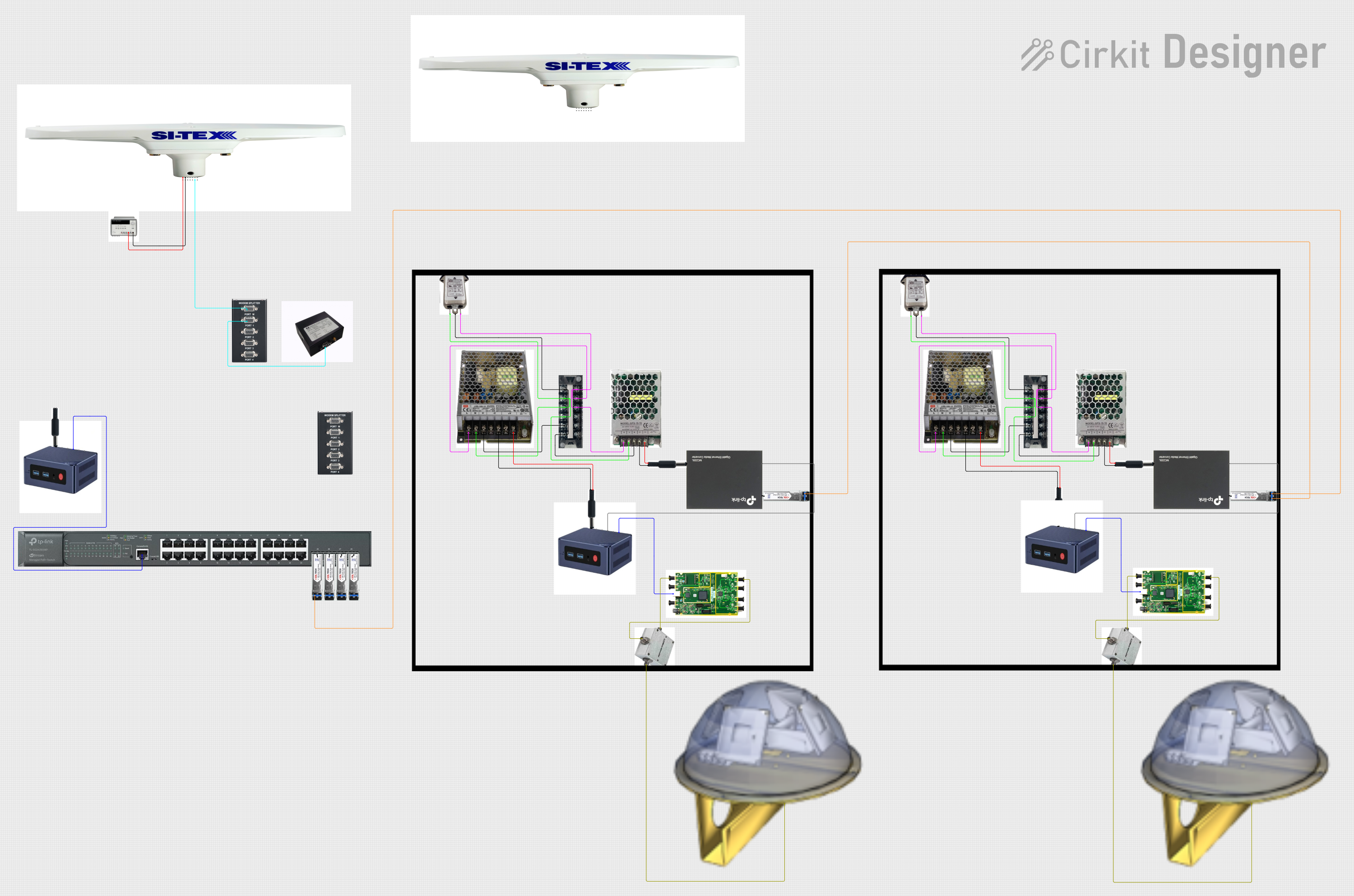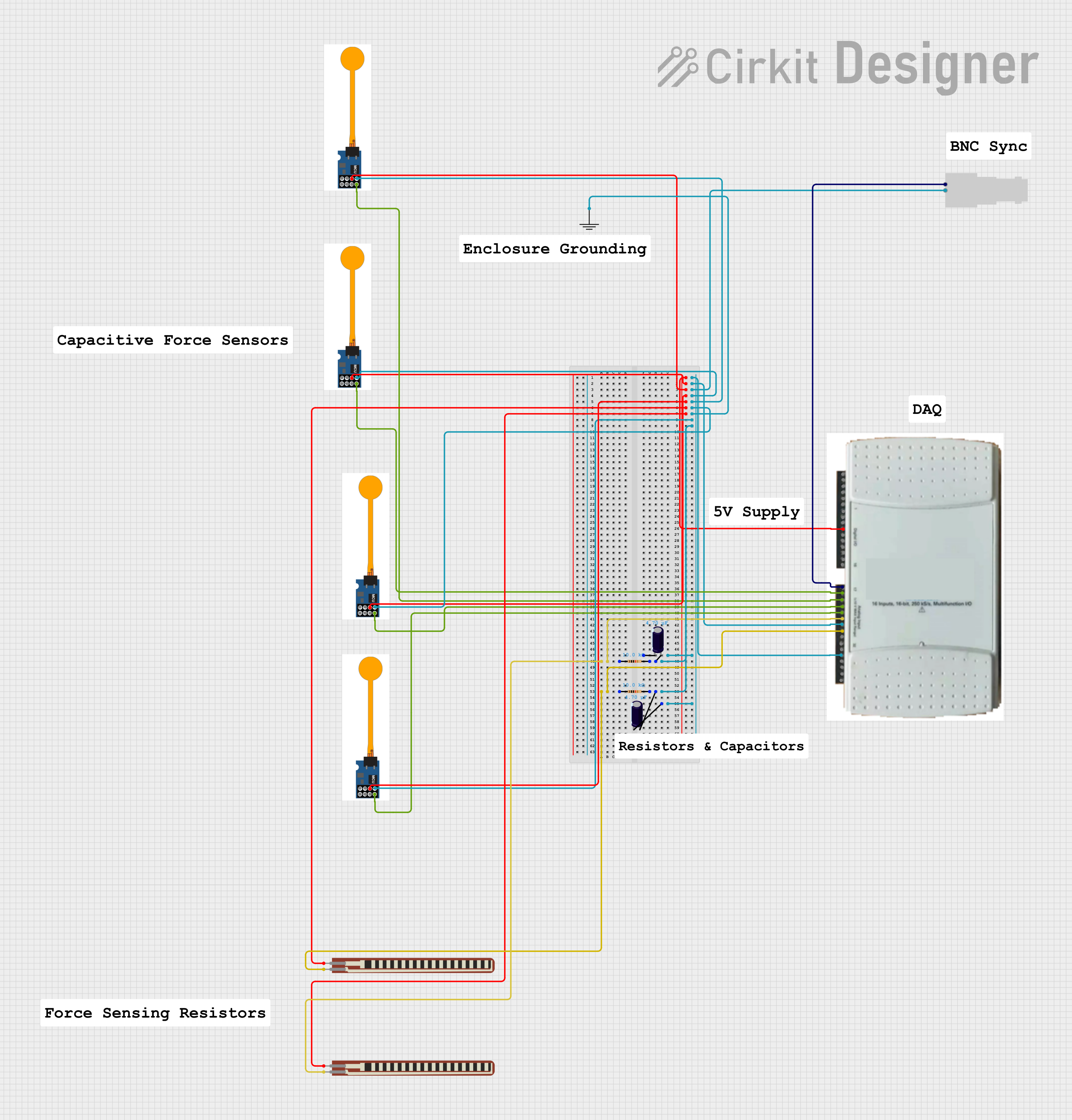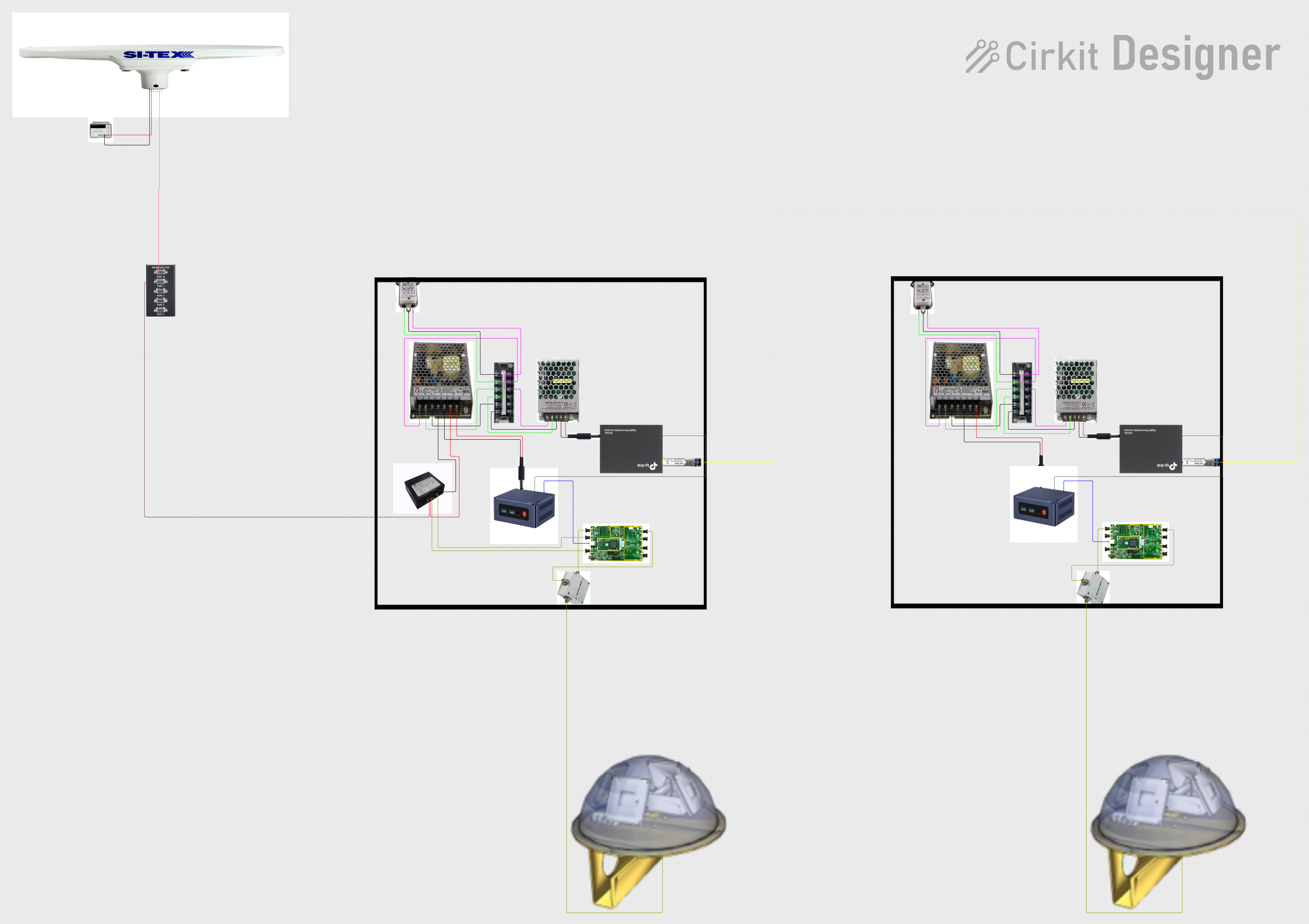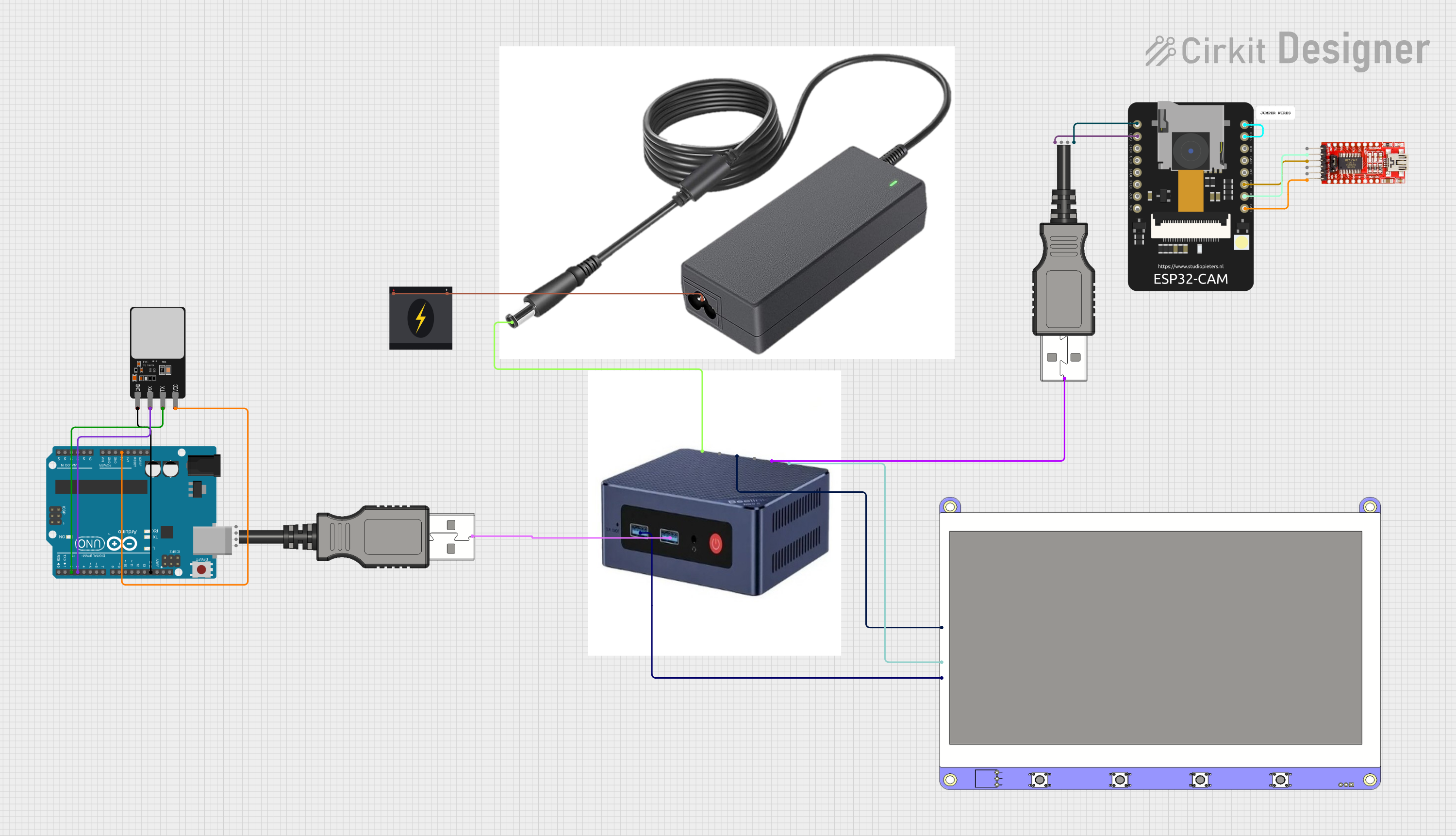
How to Use Female BNC: Examples, Pinouts, and Specs

 Design with Female BNC in Cirkit Designer
Design with Female BNC in Cirkit DesignerIntroduction
The Female BNC (Bayonet Neill-Concelman) connector is a widely used coaxial RF connector suitable for quick connect and disconnect applications. It is commonly utilized in radio, television, and other radio-frequency electronic equipment, test instruments, video signals, and was once a popular connector for Ethernet networks. Its bayonet-style locking mechanism ensures a stable and reliable connection, which is essential for maintaining signal integrity in RF systems.
Explore Projects Built with Female BNC

 Open Project in Cirkit Designer
Open Project in Cirkit Designer
 Open Project in Cirkit Designer
Open Project in Cirkit Designer
 Open Project in Cirkit Designer
Open Project in Cirkit Designer
 Open Project in Cirkit Designer
Open Project in Cirkit DesignerExplore Projects Built with Female BNC

 Open Project in Cirkit Designer
Open Project in Cirkit Designer
 Open Project in Cirkit Designer
Open Project in Cirkit Designer
 Open Project in Cirkit Designer
Open Project in Cirkit Designer
 Open Project in Cirkit Designer
Open Project in Cirkit DesignerTechnical Specifications
General Characteristics
- Impedance: Typically 50 ohms or 75 ohms (depending on the design)
- Frequency Range: Up to 4 GHz for 50 ohms, typically up to 2 GHz for 75 ohms
- Voltage Rating: 500 volts peak
- Body: Brass with nickel plating
- Center Contact: Beryllium copper, gold or silver plating
- Dielectric Type: PTFE
- Durability (Mating cycles): ≥ 500 cycles
Pin Configuration and Descriptions
| Pin Number | Description | Material | Plating |
|---|---|---|---|
| 1 | Outer Conductor | Brass | Nickel |
| 2 | Inner Conductor | Beryllium copper | Gold/Silver |
| 3 | Insulator | PTFE | N/A |
Note: The pin configuration table is a simplified representation. The Female BNC connector is a two-conductor design with an outer conductor (shield) and an inner conductor (signal).
Usage Instructions
Integration into a Circuit
- Cable Preparation: Strip the coaxial cable to expose the inner conductor and the shield without damaging the conductors.
- Soldering: Solder the center conductor to the center pin of the BNC connector and the shield to the outer conductor. Ensure a good-quality solder joint to maintain signal integrity.
- Connection: Align the notches of the Female BNC connector with the male connector's bayonet pins, insert, and twist to lock.
- Testing: After installation, always test the connection with appropriate equipment to ensure there are no shorts or open circuits.
Best Practices
- Use the correct impedance connector (50 ohms or 75 ohms) to match the cable and equipment.
- Avoid over-tightening the bayonet coupling to prevent damage.
- Ensure that the cable is properly supported to avoid stress on the connector.
- Keep connectors free of dust and other contaminants to maintain good electrical contact.
Troubleshooting and FAQs
Common Issues
- Poor Signal Quality: Check for any loose connections or poor solder joints. Ensure the use of the correct impedance connector.
- Physical Damage: Inspect the connector for any physical damage that might affect performance. Replace if necessary.
- Intermittent Connection: Ensure that the connector is fully engaged with a firm twist and that there is no debris or damage preventing a good connection.
FAQs
Q: Can I use a 50-ohm BNC connector with a 75-ohm system? A: It is not recommended as it may lead to signal reflection and loss.
Q: How do I know if my BNC connector is 50 ohms or 75 ohms? A: Typically, the connector's impedance is marked on its body. If not, refer to the manufacturer's datasheet.
Q: Are BNC connectors suitable for high-frequency applications? A: BNC connectors are suitable for applications up to 4 GHz for 50 ohms and typically up to 2 GHz for 75 ohms.
Q: How do I prevent the BNC connector from coming loose? A: Ensure that the bayonet locking mechanism is fully engaged and check for wear and tear regularly.
Example Arduino UNO Connection
The Female BNC connector is not directly connected to an Arduino UNO but is used to connect RF equipment or antennas to modules that can interface with an Arduino. Below is an example of how to connect an RF module with a BNC connector to an Arduino UNO:
// Example code to initialize an RF module connected to an Arduino UNO
// This is a conceptual example and may not work with all RF modules.
#include <SPI.h> // Include the SPI library for communication
void setup() {
// Initialize serial communication for debugging
Serial.begin(9600);
// Set up the RF module's communication pins
pinMode(SS, OUTPUT); // Slave Select pin for the SPI interface
SPI.begin(); // Begin SPI communication
}
void loop() {
// Example code to send data through the RF module
// Replace with actual data and commands for your specific RF module
SPI.beginTransaction(SPISettings(4000000, MSBFIRST, SPI_MODE0));
digitalWrite(SS, LOW); // Select the RF module
SPI.transfer(0x00); // Send a byte of data
digitalWrite(SS, HIGH); // Deselect the RF module
SPI.endTransaction();
delay(1000); // Wait for a second before sending the next byte
}
Note: The above code is for illustrative purposes only. The actual implementation will vary based on the specific RF module and its communication protocol.
Remember to consult the datasheet of the RF module for the correct pin connections and communication protocols. The BNC connector itself does not interface with the Arduino but serves as a connection point for the coaxial cable coming from the RF equipment.